Are you looking for a simple way to set up Google Analytics Contact Form 7 tracking to see how many submissions your forms are getting?
Contact Form 7 is one of the most popular form plugins for WordPress. If you’ve got different forms on your site, it’s important to know how they’re performing. The best way to do that is through Google Analytics.
Unfortunately, Google Analytics can’t track form submissions or conversions by default. You’d typically have to manually set up tracking to see the performance of your forms, but we’ll show you a simpler way!
In this article, we’ll show you step-by-step how to track Contact Form 7 submissions in Google Analytics. Let’s begin with…
Benefits of Tracking Contact Form 7
At this stage, you might be wondering about the benefits of tracking Contact Form 7 in Google Analytics.
Tracking form submissions with Google Analytics helps you measure which marketing campaign captures the most leads and how each form is converting. That way, you can create similar campaigns and lead-generation forms in the future and optimize the ones that aren’t performing as well.
Besides, tracking Contact Form 7 will also provide insights into your visitor’s behavior. You can see how people interact with different forms, where they click, how often they submit or abandon forms, and more.
Using this data from Analytics, you can create more engaging forms, reach out to people who didn’t finish submitting the form, and provide a better user experience.
So, let’s take a look at how to set up Contact Form 7 tracking in Google Analytics.
How to Set Up Contact Form 7 Conversion Tracking in Google Analytics
Setting up form tracking in Google Analytics isn’t that straightforward, especially for beginners. That’s because Google Analytics doesn’t track form submissions and conversions by default. You’ll have to set up tracking manually.
This requires adding a piece of tracking code to your website, which can be difficult if you’re not a developer. Not to mention, any mistake can lead to inaccurate tracking or may even break your website.
So, the easiest way of tracking form submissions in Google Analytics is with ExactMetrics.
ExactMetrics is the best premium WordPress Analytics plugin that makes setting up form tracking a walk in the park. You won’t have to hire a developer, edit code, or manually set up tags for each form on your website with Google Tag Manager. ExactMetrics automatically tracks all types of WordPress forms, including Contact Form 7.
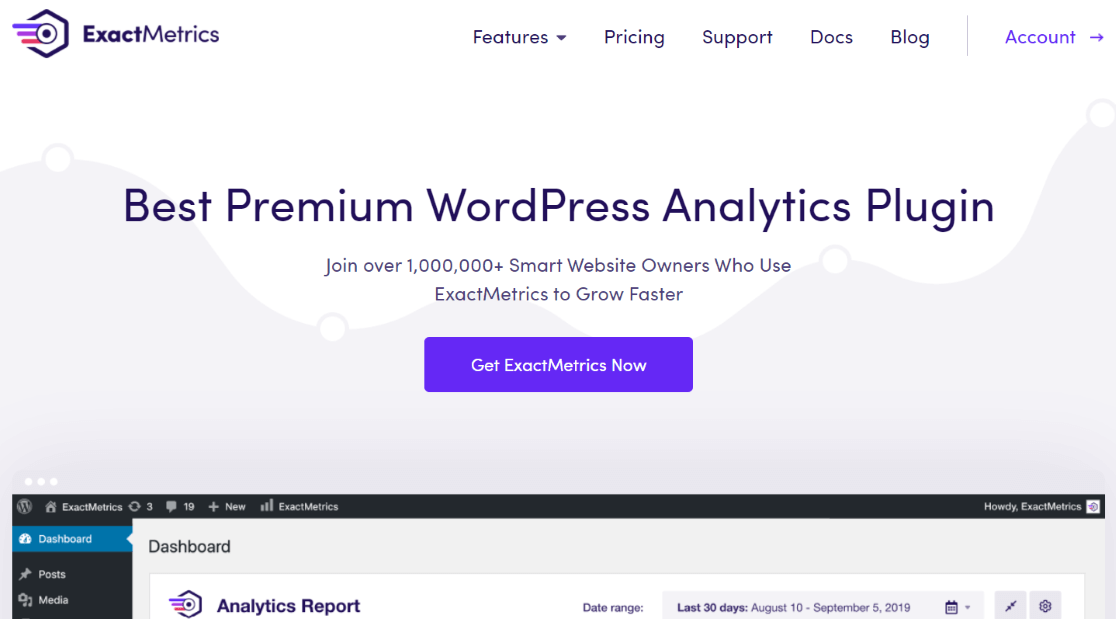
You’ll get all your most important Google Analytics reports, including Form performance right inside your WordPress dashboard. Plus, ExactMetrics comes with tons of other advanced tracking features right out of the box such as 1-click eCommerce tracking, custom dimensions, video play tracking, and lots more.
All you need to do to get started is sign up for an ExactMetrics Pro license. The plugin will take care of the rest, just follow these simple steps to start tracking Contact Form 7 submissions in Google Analytics.
Step 1: Install ExactMetrics and Connect Google Analytics
The first thing you’ll need to do is install the WordPress plugin on your website. After you purchase ExactMetrics, download the zip file.
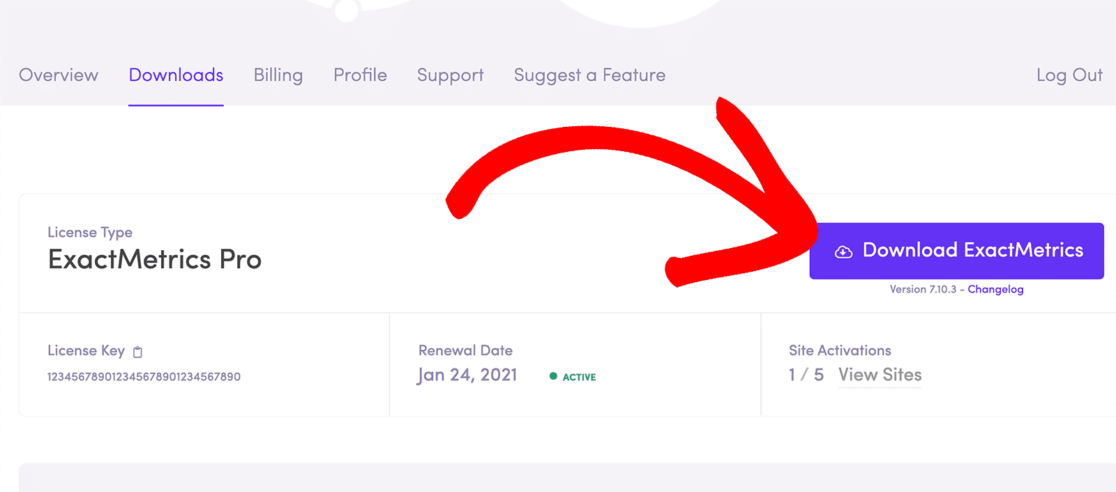
Next, upload the file and activate it on your WordPress site.
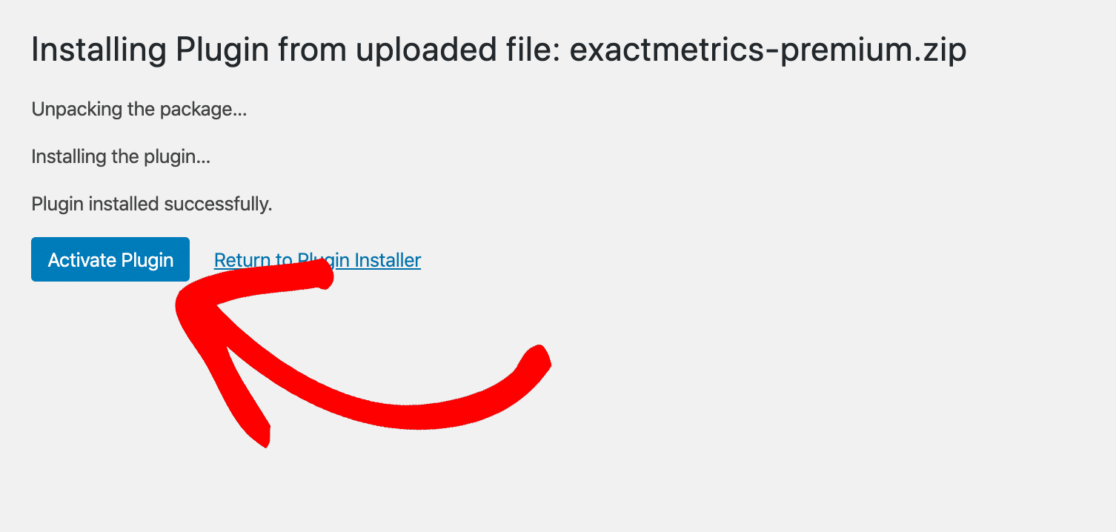
The next step is to connect Google Analytics with your WordPress website. Usually, this requires entering a tracking code on the web pages you want to track, which means going through the website code.
But ExactMetrics makes this process very simple. You don’t need to know how to code or have any technical knowledge. Its setup wizard guides you every step of the way and automatically adds the necessary tracking code. Just press Launch the Wizard to get going.
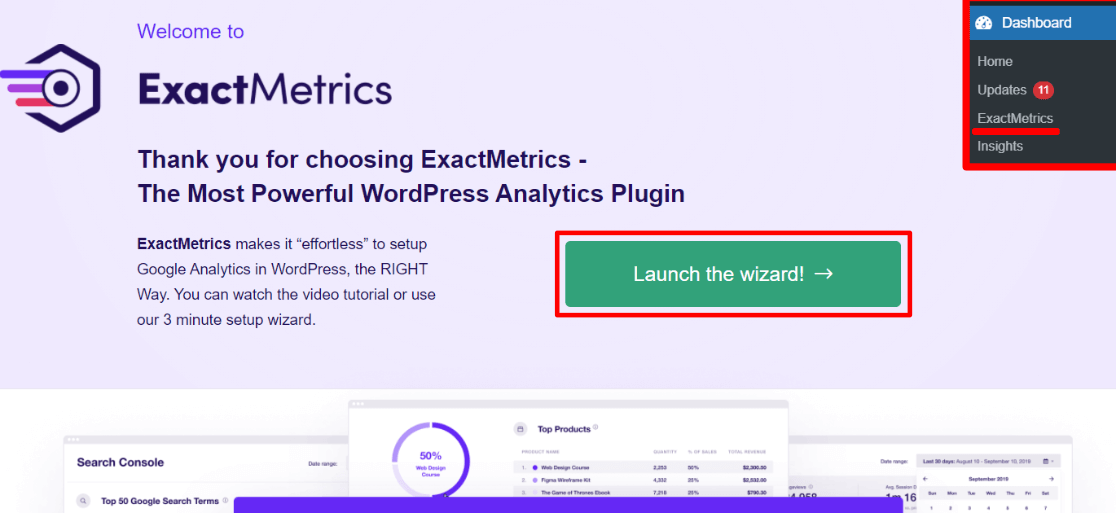
If you need help with these steps, we’ve created a detailed guide on how to add Google Analytics to WordPress.
Step 2: Install and Activate the Forms Addon
After that, you’ll now need to activate the ExactMetrics Forms addon. This is what enables ExactMetrics to track form conversions automatically. It creates Google Analytics events for each form, so you don’t have to track every individual form manually.
To install the addon, go to ExactMetrics » Addons » Forms. Now click the Install button and wait for a few seconds for the addon to become active.
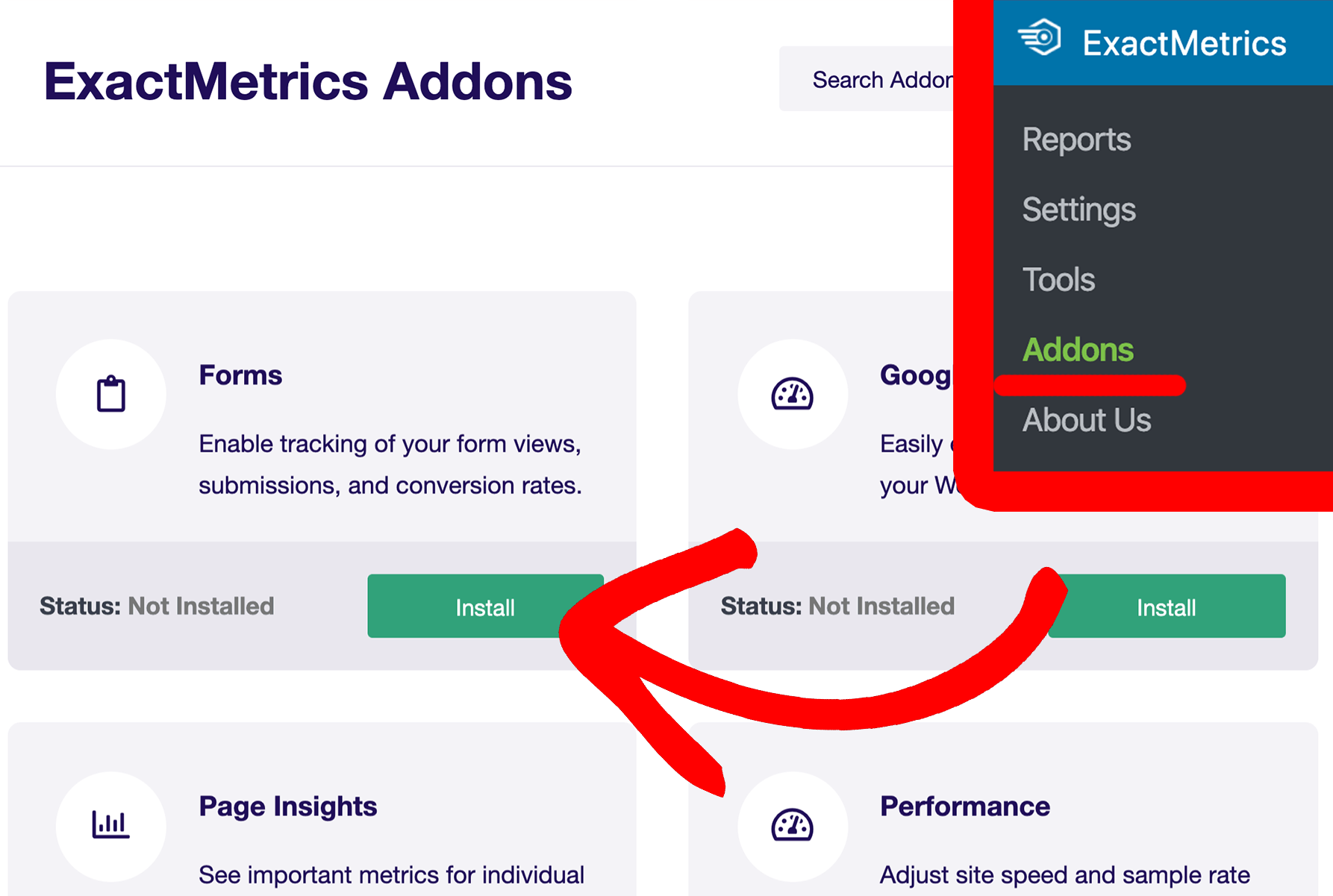
Once the addon is active, it will start to track form conversions in Google Analytics.
To verify that it’s working, go to ExactMetrics » Settings » Conversions. Under Form Tracking, you should see the Enable Form Conversion Tracking option enabled.
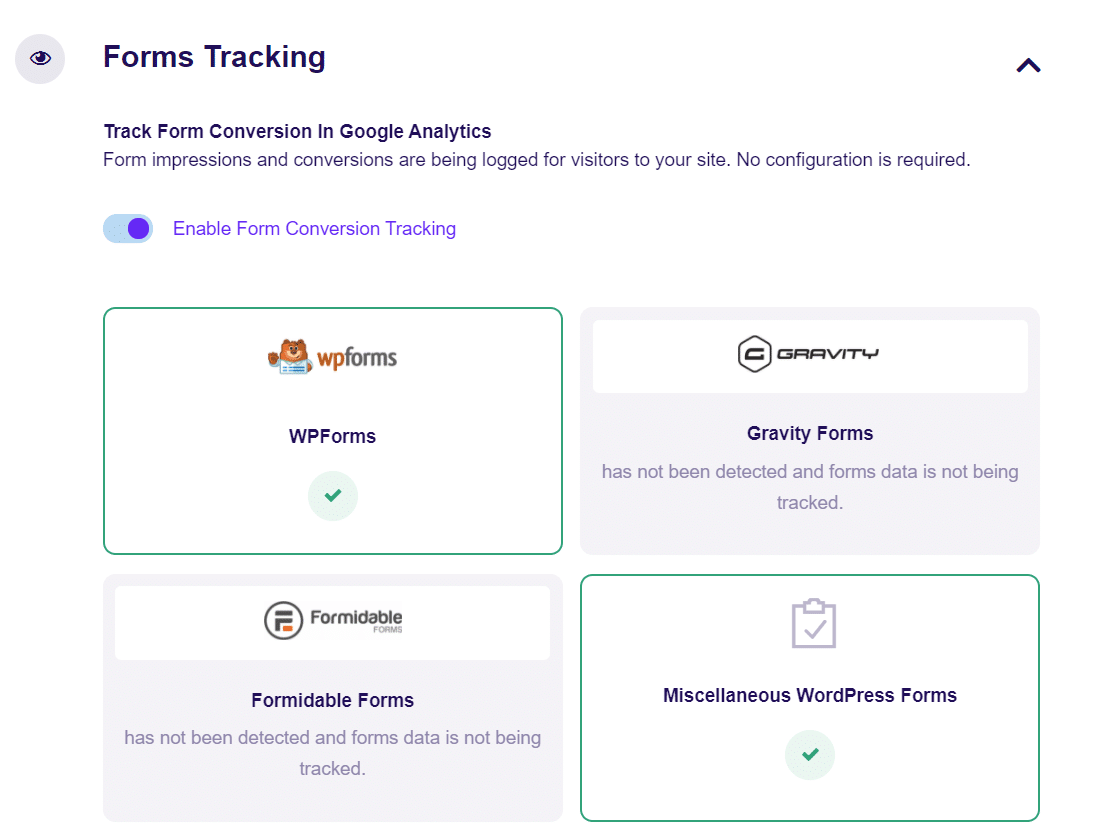
Step 3: View Form Submission Report
Now that you’ve successfully set up Contact Form 7 submission tracking, the next thing to do is view the report and see the performance of each form.
With ExactMetrics, you get to see detailed reports inside your WordPress dashboard. It saves time, and you don’t have to navigate through different Google Analytics reports to find your contact form conversions.
To see the report, go to ExactMetrics » Reports » Forms. The plugin will show the number of impressions, conversions, and conversion rate for your Contact Form 7 forms. Since the plugin integrates with every WordPress form-builder, it’ll also track any other forms that are on your site.
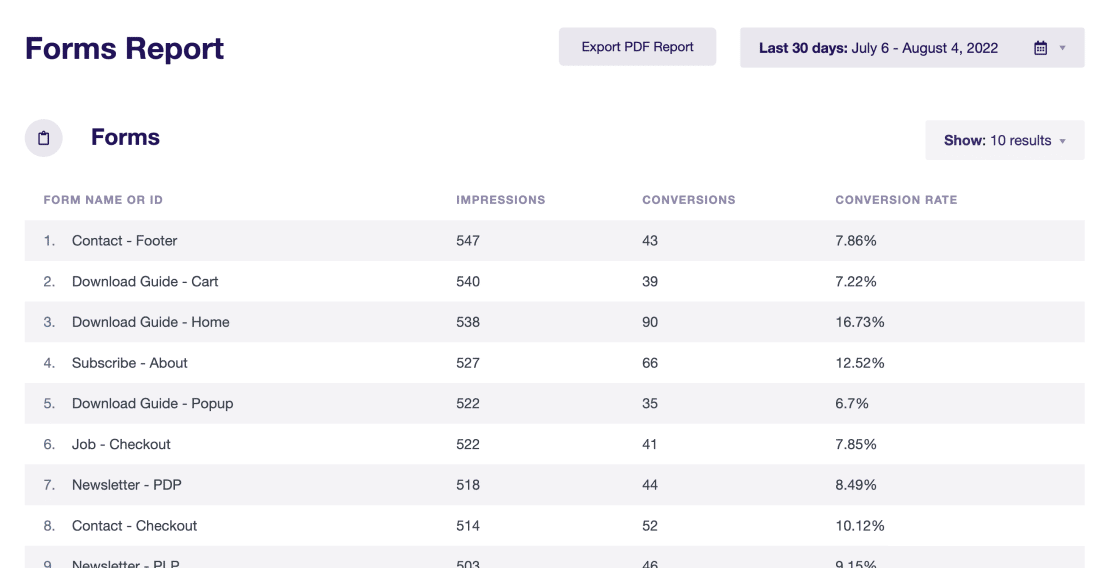
Do note that it can take 24-48 hours for Google Analytics to track an event like a form conversion, so you may have to wait before you can see data in your forms report. But after it’s set up properly and your first report is prepared, it’ll show real-time reports every time it’s refreshed.
If you’d like to learn more about how to view your newly configured form events in Google Analytics, head to our guide on tracking form submissions in Google Analytics.
By following these steps, you now know how your forms are performing and which ones are getting the most impressions and conversions. Since ExactMetrics takes care of all the complicated stuff behind the scenes, you can also use your form submission event in custom reports to get even more data and insights.
And that’s it!
We hope you liked our article on how to set up Google Analytics Contact Form 7 tracking. If you found this post useful, check out our guide on how to exclude WordPress admins from Google Analytics.
Not using ExactMetrics yet? What are you waiting for?
Don’t forget to follow us on Twitter and Facebook to see all the latest reviews, tips, and Google Analytics tutorials.

